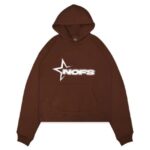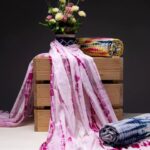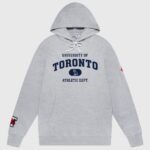Dressing comfortably for work is more important than many people realize. When you wear clothes that fit well and feel good on your skin, your confidence and productivity improve. You don’t have to sacrifice style or professionalism to stay comfortable during a busy workday. With a few thoughtful choices, you can build a wardrobe that helps you feel relaxed and ready, from morning meetings to late afternoons. Here’s a detailed guide on how to dress comfortably for work.
Choose the Right Fabrics
The foundation of comfort is the fabric you wear. Natural materials such as cotton, wool, and linen are great options because they breathe well and regulate temperature. Cotton shirts and blouses feel soft against your skin and prevent overheating. Wool sweaters or blazers keep you warm without being heavy, while linen is perfect for warmer days because it allows air circulation.
Avoid synthetic fabrics like polyester or nylon when possible, as they tend to trap heat and cause sweating. However, blends that include a small percentage of stretchy materials like spandex can add comfort by letting your clothes move with your body. These fabrics help prevent that tight, restrictive feeling that can make you distracted at work.
Focus on Fit and Flexibility
Even the best fabrics won’t help if your clothes don’t fit well. Clothes that are too tight can restrict your movement and cause discomfort, while overly loose garments might feel sloppy and get in your way. Aim for well-fitted clothes that follow your body’s natural lines without clinging.
When shopping for work pants or skirts, look for options with some stretch or a relaxed cut. For example, dress pants with a bit of elastic in the waistband or stretchy inserts provide freedom to sit, stand, and move easily. Avoid stiff fabrics that don’t bend when you do. Comfort means your clothes should support you through a variety of tasks, from typing at your desk to walking to meetings.
Layer Your Clothing Wisely
Layering is a smart strategy to stay comfortable throughout the day, especially if your workplace temperature fluctuates. You can add or remove layers to adjust without feeling hot or cold.
Start with a breathable base layer like a cotton or moisture-wicking shirt. Add a lightweight sweater, cardigan, or blazer that fits well over it. Layers also help add visual interest and style without sacrificing comfort. For example, a soft cashmere cardigan over a crisp blouse keeps you warm without the bulk of a heavy jacket. Just make sure your layers are easy to move in and don’t feel tight or heavy.
Invest in Comfortable Footwear
Your shoes carry you through the day, so they deserve attention. Choose shoes with good arch support, cushioning, and enough room for your toes to move comfortably. Whether you wear flats, loafers, or low heels, comfort should be a priority.
If your workplace allows, stylish sneakers or slip-ons can be a fantastic option for long days. Look for shoes made with breathable materials that prevent overheating and moisture buildup. If dress shoes are a must, consider brands that focus on comfort technology or include removable insoles for added support.
Don’t forget the importance of good socks. A quality pair of men’s crew socks made from breathable cotton or moisture-wicking fibers can prevent your feet from feeling hot or sweaty. They also add a layer of cushioning, which is important for comfort during long hours on your feet.
Pay Attention to Undergarments
What you wear underneath your clothes is just as important for comfort. Ill-fitting bras, tight underwear, or scratchy tags can cause irritation and distraction throughout your day. Choose seamless or smooth undergarments that don’t dig into your skin.
Look for moisture-wicking fabrics, especially if you tend to sweat during the day or commute. Supportive bras that fit well can reduce back and shoulder discomfort. For men, comfortable undershirts or breathable briefs make a big difference in all-day comfort.
Choose Comfortable Bottoms
Pants, skirts, and dresses should let you sit, stand, and move easily. Stretch fabrics or looser cuts offer flexibility and prevent pinching or riding up. If you have a dress code that allows, soft trousers, knit skirts, or dresses made from jersey or ponte fabrics feel more like casual clothes but look polished.
Avoid stiff fabrics or tight waistbands that dig in after hours of sitting. Elastic or adjustable waistbands provide extra comfort and are worth seeking out. Comfort in your bottoms helps prevent distractions and keeps you focused on your work.
Keep Accessories Simple and Comfortable
Heavy jewelry or tight belts might make your outfit less comfortable. Choose lightweight accessories that don’t pinch or pull on your clothes. Thin belts with flexible buckles offer support without discomfort. When possible, wear accessories that are easy to remove or adjust if they start to bother you during the day.
Opt for Quality Basics
Building a comfortable wardrobe starts with investing in quality basics. Well-made shirts, blouses, sweaters, and pants last longer and feel better on your skin. These pieces usually feature better fabrics, cuts, and construction.
Having a reliable collection of basic pieces also makes dressing easier each morning. You can mix and match your comfortable essentials for different looks without extra effort.
Consider Your Work Environment
Every workplace is different. Some offices are formal and require suits and ties, while others allow casual or business casual attire. It’s important to dress comfortably while respecting your company’s dress code.
If your office is more formal, choose tailored pieces made from soft fabrics. For casual environments, you can experiment with comfortable jeans, knit tops, or casual blazers. Find the right balance between professionalism and comfort that works for your job.
Final Thoughts
Dressing comfortably for work doesn’t mean sacrificing style or professionalism. Focus on choosing breathable fabrics, well-fitting clothes, and supportive shoes to maximize comfort. Don’t forget the small details like quality socks and the right undergarments—they make a big difference. With thoughtful choices, you can build a work wardrobe that helps you feel confident, relaxed, and ready to tackle your day.
- How to Dress Comfortably for Work: Simple Tips for All Day Comfort
- Learn how to dress comfortably for work with breathable fabrics, perfect fit, supportive shoes, and smart layering. Stay stylish and cozy all day long.
- office outwear
Related posts:
 Love That Lasts: The Rise of Lab Diamond Wedding Bands mined diamonds
Love That Lasts: The Rise of Lab Diamond Wedding Bands mined diamonds
 Nofs and Nofs Signature Tracksuit Nofs and Nofs Signature Tracksuit
Nofs and Nofs Signature Tracksuit Nofs and Nofs Signature Tracksuit
 Tie and Dye Shibori Fabric: Tradition, Artistry, and Contemporary Style
Tie and Dye Shibori Fabric: Tradition, Artistry, and Contemporary Style
 OVO Clothing Brand: A Comprehensive Look Into October’s Very Own
OVO Clothing Brand: A Comprehensive Look Into October’s Very Own
 The Yellowstone Jacket That’s Turning Cowboys into Style Icons
The Yellowstone Jacket That’s Turning Cowboys into Style Icons
 The Ultimate Guide to Men’s Dress Hats: Elevate Your Style with Timeless Elegance
The Ultimate Guide to Men’s Dress Hats: Elevate Your Style with Timeless Elegance
 Discover the Elegance of Cainte Watches & Where to Buy………….
Discover the Elegance of Cainte Watches & Where to Buy………….
 From Classic to Bold: Best Box Braid Styles You’ll Absolutely Love
From Classic to Bold: Best Box Braid Styles You’ll Absolutely Love








